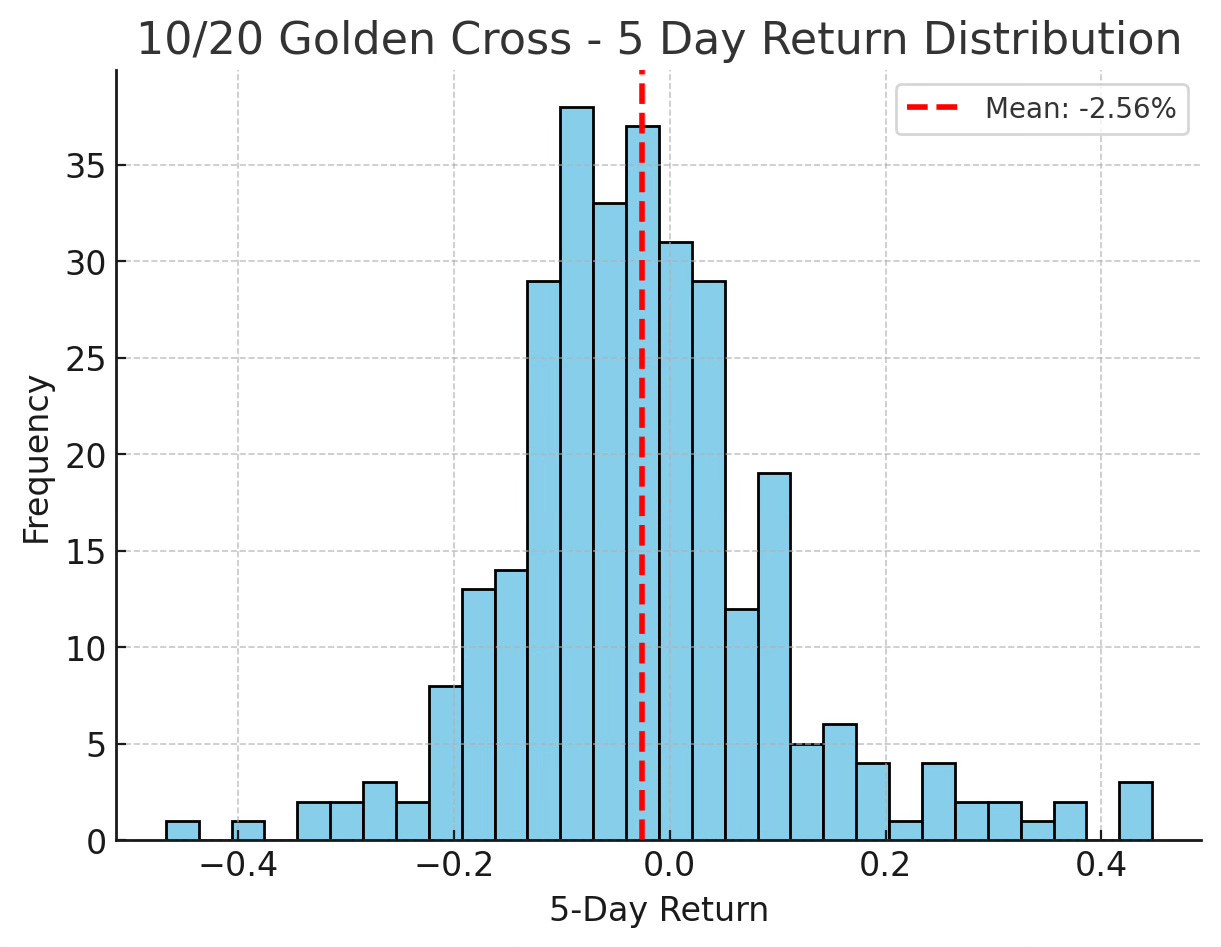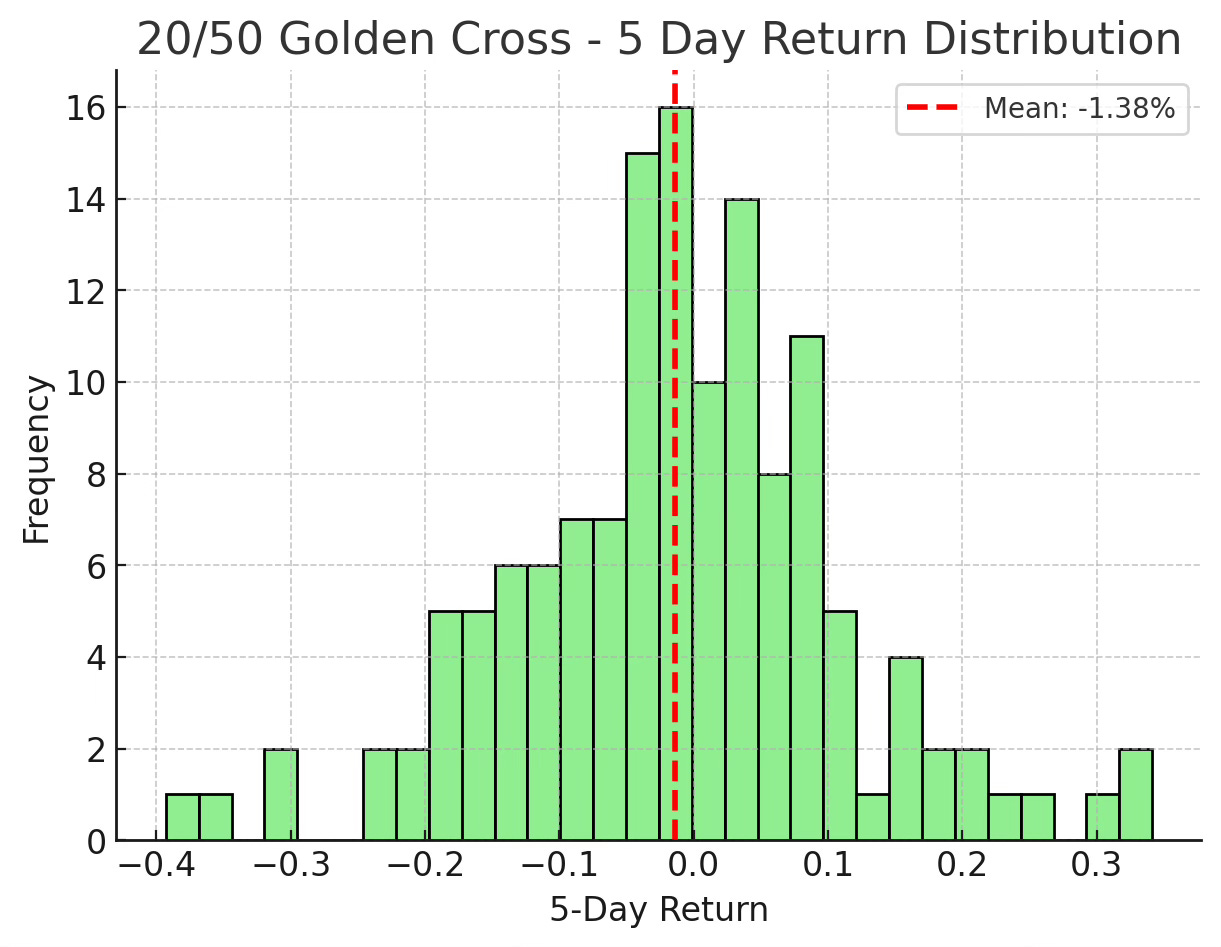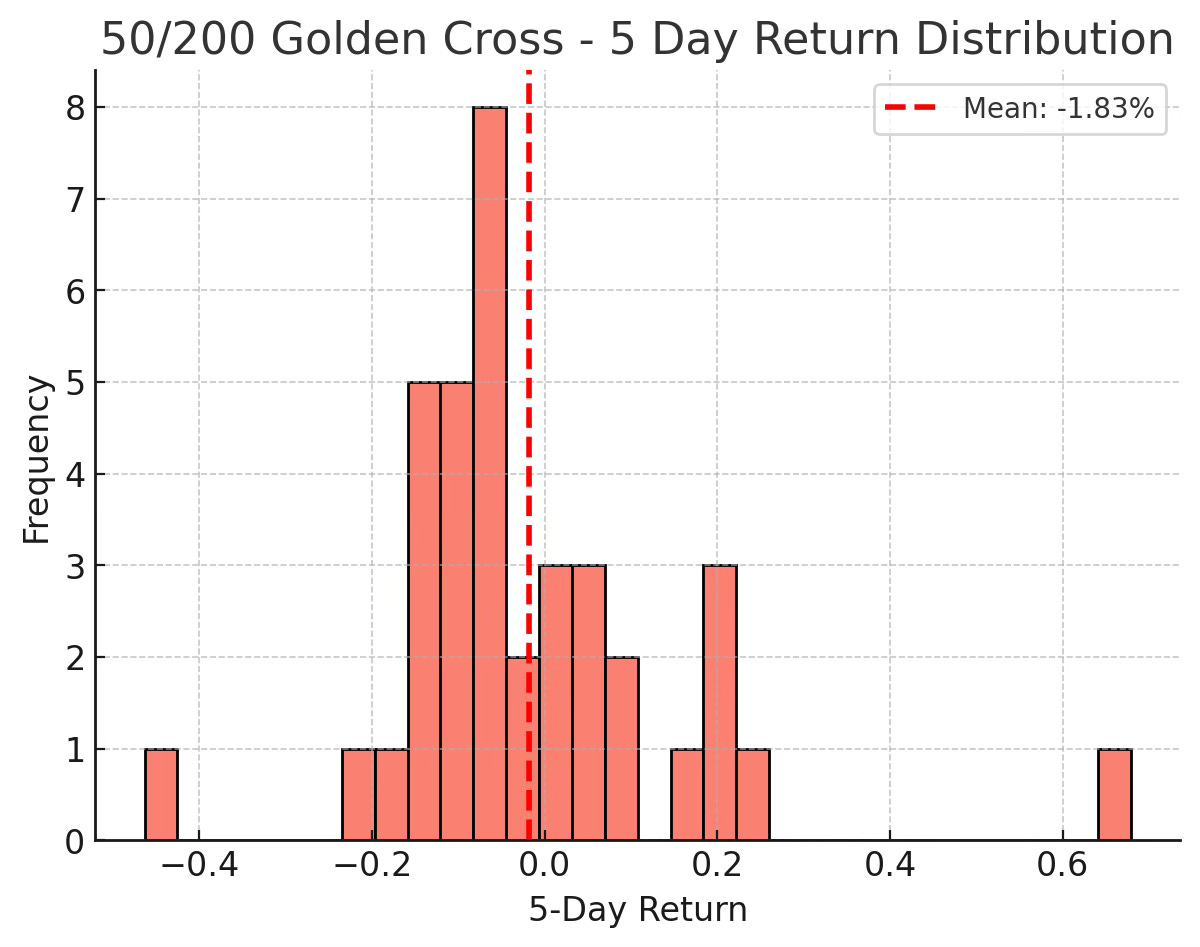When we think of a “golden cross” in stocks, it usually signals the start of a strong uptrend — the shorter moving average pushing above the longer one. But the VIX is not a stock. It’s a mean-reverting index of fear, and that changes how these signals behave.
By studying golden crosses in the 10/20, 20/50, and 50/200 simple moving averages, we can see how often they occur, how the VIX performs afterward, and whether there’s any predictive edge for traders.
The Numbers
10/20 Golden Cross
Occurrences: 305
Average return after 1 day: –0.88%
Average return after 1 week: –2.56%
1-day outcomes: 40% positive / 60% negative
1-week outcomes: 36% positive / 65% negative
Median time until death cross: 12 days
Average time until death cross: ~14 days
Interpretation: These crosses are common, short-lived (about two weeks), and tend to be followed by lower VIX levels.
20/50 Golden Cross
Occurrences: 137
Average return after 1 day: +0.30%
Average return after 1 week: –1.38%
1-day outcomes: 45% positive / 55% negative
1-week outcomes: 45% positive / 55% negative
Median time until death cross: 28 days
Average time until death cross: ~30 days
Interpretation: These signals occur less often, last about a month, and while the next-day reaction is slightly positive, the VIX typically drifts lower over the following week.
50/200 Golden Cross
Occurrences: 37
Average return after 1 day: +1.15%
Average return after 1 week: –1.83%
1-day outcomes: 38% positive / 62% negative
1-week outcomes: 35% positive / 65% negative
Median time until death cross: 90 days
Average time until death cross: ~92 days
Interpretation: Rare but long-lasting (about 3 months). These crosses usually happen in elevated volatility regimes(average VIX ~22). The next day often sees a sharp spike, but within a week the VIX has usually moved lower again.
Day-to-Day Predictability
Unlike equities where golden crosses can fuel bullish momentum, the VIX behaves differently:
Next day bias: Only the 50/200 cross shows consistent upward follow-through on day 1. Shorter crosses usually lead to flat or negative next-day returns.
One week bias: All three types of crosses show negative drift after 5 trading days. In other words, the VIX tends to be lower one week after a golden cross more often than not.
Probabilities: One-day and one-week positive returns rarely exceed 45%. Most of the time, the VIX moves in the opposite direction traders might expect from a “golden cross.”
Average Time Until Death Cross
10/20 cross: ~2 weeks
20/50 cross: ~1 month
50/200 cross: ~3 months
This scaling makes sense — shorter-term averages cross often and revert quickly, while longer averages represent deeper volatility shifts that last longer.
Can Traders Use This Information?
Not as a momentum signal. In equities, golden crosses often support trend-following. In the VIX, they tend to mark the end of a spike, not the start of one.
As a contrarian filter. Since the VIX usually falls in the days following these crosses, traders in equities could interpret them as a sign that market fear is peaking, making risk assets more attractive.
Day-to-day predictability is limited. With less than 45% odds of a positive next-day or next-week return after most golden crosses, they should not be used for precise short-term trading in VIX products.
Conclusion
Golden crosses on the VIX don’t behave like they do in stocks. Instead of launching sustained volatility uptrends, they more often mark peak fear points that fade as the VIX reverts toward its mean.
The 10/20 cross is common and usually followed by a decline.
The 20/50 cross lasts longer but still points to eventual mean reversion.
The 50/200 cross is rare, happens in crises, and signals a regime of elevated volatility — but even then, the VIX tends to settle lower within a week.
For traders, the key takeaway is this: VIX golden crosses are not buy signals — they’re more useful as warnings that volatility has already risen and may be due to mean-revert.





